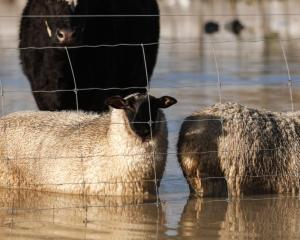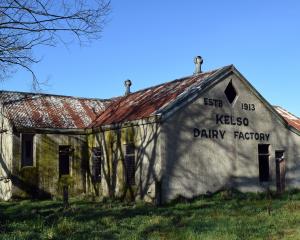
RAM breeder Pete Gardyne is encouraging farmers to support other Poll Dorset studs this season.
He and his wife, Esther, bought the Ohio Poll Dorset stud from their longtime ram supplier last year.
This season, nearly 8000 ewes and more than 2000 hoggets were put to the ram on their 1300ha Arkley Farm in Knapdale, north of Gore.
About 500 of those were stud sheep, about 50% more than last season due to mating the hoggets in the stud and buying a smaller Poll Dorset stud.
Consequently, more Poll Dorset rams would be available for sale next season.
"There are a few really good stud breeders finishing up and people should keep buying their rams this year and we are open for business the following year."
A critical mass of Poll Dorset breeders must succeed to help grow the breed.
"We want the other breeders to be good because iron sharpens iron."
If another Poll Dorset stud bought one of their rams and put it over their own ewes, then its progeny might be available to buy, he said.
"It outsources some of your breeding."
Farmers were willing to share information and help each other because they were not competing against other.
"That is the cool thing about farming, if a neighbour down the road is doing well, it doesn’t hurt your business."
The aim of the stud had never been to poach clients from other Poll Dorset studs, but highlight the breed’s growth potential to bring in new clients.
"In farming, you can tell big stories and say whatever you want, but at the end of the day, you only get paid for what you put on the truck to the freezing works."
Farmers needed to breed a better sheep to remain viable and compete with other land-use options, he said.
Diversification on his farm includes growing on contract turf grass and white clover seed.
"We’ve all got mortgages to pay."
Forestry being planted on pastoral land was "sad", but if it was the best use of the land to pay the bills then sheep farming needed to lift its game and keep moving forward or get left behind.
There were so many things they could do other than "plant everything in trees".
A way to do this was to produce heavier lambs.
The average weight of the lambs he sent to the meatworks last year was 21kg, heavier than the national average, but it was something wanted to rise.
"We need to go heavier."
The farm operation includes summer store lambs, but he bought fewer last year due to slimmer margins.
"We took our own lambs heavier and it better matched our grass curve."
Meat companies should be processing heavier lambs rather than lighter ones.
"You only need to cut the lamb’s throat once, skin it once and gut it once."
Since he started farming, meat processors had lifted the weight limit of sheep they would accept for slaughter without penalising the farmer.
"The industry is heading in the right direction on that one, but I think bigger, harder, faster."
Some parts of the world had contracts for lambs weighing more than 30kg, he said.
He believed the best finishing crop for a lot of Southland was a short-rotation hybrid ryegrass, a three- to five-year pasture including clover.
"It grows really well at the shoulders of the season, you can graze it with cattle and you can set stock it for periods of time and lamb on it."
Some farmers avoided that type of pasture because they believed it did not last long enough for them, so it might need to be marketed differently, he said.
"Let’s call these short-rotation grasses, long-rotation finishing crops and then I think they would be more palatable to a farmer."
A way to grow heavier lambs was to provide quality feed to ewes from the month after their mean lambing date — October 20 on his farm — until weaning time.
"You need to have that ewe cranking and we need to hold the quality of feed as much as possible."
A challenge was the period coincided with grass going to seed.
He would be a vendor at the South Island Premier Ram Fair in Gore on January 21 next year.
Many studs held ram sales from November, so the fair might be a bit late in the season.
"I’d like to see it a bit earlier."
Although December was a busy time for farmers in the South, so they might not want to be any busier by having a ram fair to attend.
He enjoyed selling privately rather than holding a sale as it allowed the ram breeder to get to know their clients and take on any feedback, positive and negative.
"You are only as good as the last ram you sell."
The stud used a lot of sires in its mating programme, so there were options available to target genetic improvements in their ewe flock.
"We can pick a ram more specific to her needs to breed a more even animal."
At mating, they used 12 Poll Dorset sires across 16 mobs of ewes.
A focus of the stud was breeding rams and ewes which had a good physical type and Sheep Improvement Ltd genetic evaluation data.
"It can hurt a wee bit when you see a ram with good figures but there is something you don’t physically like about them and it’s chop, chop time. It makes it tough, but it is a long game."















